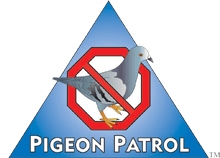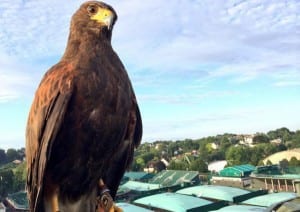
by Pigeon Patrol | Nov 5, 2015 | Animal Deterrent Products, Bird Deterrent Products, Bird Netting, Pigeon Patrol's Services, Pigeon Spikes, UltraSonic Bird Control
 IN “THE silence of the birds” (Jan 4), wildlife scientist Umesh Srinivasan said that logged forests being converted into oil palm plantations have next to zero value for tropical biodiversity.
IN “THE silence of the birds” (Jan 4), wildlife scientist Umesh Srinivasan said that logged forests being converted into oil palm plantations have next to zero value for tropical biodiversity.
In land-scarce Singapore, what little that is left of our pristine primary tropical forests is mainly confined to the catchment areas, nature reserves and some offshore islands. Biodiversity can occur only with minimum human encroachment.
Wildlife can either adapt, move on or perish. Some animals have found new food sources and shelter in our urban environment and some have even flourished.
The most ubiquitous is the mynah bird, which can be seen all around, from parks to hawker centres. Their nightly gathering on roadside trees in large numbers is a constant source of nuisance, with their noise and droppings.
Another is the pigeon. If fed by people who disregard feeding prohibitions, their numbers can explode quickly. Their droppings also transmit diseases.
Cutting down trees or drastically trimming tree canopies to reduce bird roosting is not sustainable as it reduces the amount of shade for pedestrians.
The prey-predator ratio should be restored. In nature, when this delicate balance is maintained, the pool of species preyed upon will not increase beyond the point that it causes depletion of food and water resources.
In Singapore, there seems to be very few indigenous birds of prey to help bring down the population of mynahs and pigeons.
We could emulate the US, where the peregrine falcon was released in various cities to help reduce the pigeon population.
Perhaps, the Agri-Food and Veterinary Authority could commission a study on which species of birds are most adaptable to living in Singapore’s city area and suburbs.
There could be a breeding and release programme. GPS devices could be attached to the released birds in a way that would not restrict their movements, just like the civet cats on Ubin (“Civets on Ubin get GPS collars”; Jan 23).
If this programme proves successful, we might be able to completely solve the problem caused by the huge population of mynahs and pigeons here.
About Pigeon Patrol:
Pigeon Patrol Products & Services is the leading manufacturer and distributor of bird deterrent (control) products in Canada. Pigeon Patrol products have solved pest bird problems in industrial, commercial, and residential settings since 2000, by using safe and humane bird deterrents with only bird and animal friendly solutions. At Pigeon Patrol, we manufacture and offer a variety of bird deterrents, ranging from Ultra-flex Bird Spikes with UV protection, Bird Netting, 4-S Gel and the best Ultrasonic and audible sound devices on the market today.
Voted Best Canadian wholesaler for Bird Deterrent products four years in a row.
Contact Info: 1- 877– 4– NO-BIRD (www.pigeonpatrol.ca)
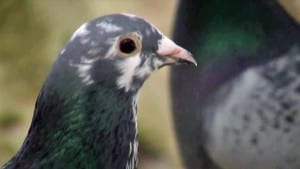
by Pigeon Patrol | Nov 4, 2015 | Bird Netting, Pigeon Patrol's Services, Pigeon Spikes, Pigeons in the News, UltraSonic Bird Control
 As many as 10,000 band-tailed pigeons may have died in California this winter, according to Krysta Rogers, an environmental scientist with the California Department of Fish and Wildlife (CDFW). Hard numbers are difficult to produce, because birds are difficult to monitor, but these estimates are based on reports of dead birds submitted by the public.
As many as 10,000 band-tailed pigeons may have died in California this winter, according to Krysta Rogers, an environmental scientist with the California Department of Fish and Wildlife (CDFW). Hard numbers are difficult to produce, because birds are difficult to monitor, but these estimates are based on reports of dead birds submitted by the public.
Band-tailed pigeons are California’s only native pigeon.
They are the West Coast version of the passenger pigeon, which was once the most abundant bird in North America, but it was hunted to extinction. Millions of band-tailed pigeons used to inhabit California but almost became extinct, and much of their habitat was destroyed. They were eventually protected by the Migratory Bird Treaty Act of 1918.
Band-tailed pigeons are not listed as endangered. The pigeons spend their winters in the higher elevations of California’s mountain ranges before migrating in early spring to the northernmost regions of Northern California, Oregon, Washington and British Columbia.
The sudden increase in mortality is disturbing and sad, especially because the closest living relative to the extinct passenger pigeon has been struggling for decades to recover from rampant hunting, habitat loss and other environmental problems.
Blame Non-Native Species and the Drought
The CDFW blames the deaths on Avian Trichomonosis, a disease caused by a single-celled microscopic protozoan parasite believed to have co-evolved with the common rock pigeon, which was introduced from Europe. It causes lesions to form in infected birds’ mouths and throats. The birds, which subsist largely on acorns that they swallow whole, are unable to move food down their throats and starve or can even suffocate.
What a horrible way to die.
Scientists believe that water sources, like bird feeders and stagnant pools, may play a role, and especially in the current drought conditions in California.
“These events seem to be more common in winters with less precipitation, so I do suspect there is some weather component in these mortality events,” Rogers said. “When you have large flocks and there is a disease like this circulating, and you have stagnant pools and puddles and not much flowing water, the parasite can become more concentrated in that small amount of water and the disease is going to spread more easily.”
As a result, California wildlife authorities are asking residents to take down bird baths and feeders if they spot sick or dead birds in their yards as experts closely monitor the massive die-off.
Destruction by Non-Native Species
I am reminded of what happened in New Zealand, a country I visited a month ago.
For millions of years, there were no land mammals in the country, so New Zealand birds evolved in isolation. Free from attack and competition from mammals, many birds became flightless ground-dwellers.
Migrating to New Zealand around 1250–1300, Polynesians brought kiore (the Pacific rat) and other animals. That spelled doom for those flightless birds.
The first birds to become extinct, within a century or two after human arrival, were the largest – all species of moa, both species of goose, and both adzebill species. Being flightless, all were quite easy to hunt and catch, yielding large quantities of meat. Their slow breeding rate meant they were lost faster than they could be replaced.
The list of New Zealand species known to have become extinct since human settlement includes one bat, at least 51 birds, three frogs, three lizards, one freshwater fish, four plant species, and a number of invertebrates
Then came the second wave of destruction. Europeans came in the late 18th century, bringing rats, cats, stoats, weasels and ferrets. The rabbit was introduced as a food and game animal by European settlers and by the 1870s, it was becoming a serious threat to the newly developed farming economy.
Farmers began demanding the introduction of mustelids (including stoats) to control the rabbit plague. Warnings about the dangers to bird life from stoats were given by scientists in New Zealand and Britain. However, the warnings were ignored and stoats began to be introduced from Britain in the 1880s. Within six years, drastic declines in bird populations were noticed.
The destruction in New Zealand continues.
And now the pattern is repeating itself in California, this time with the European-introduced rock pigeon potentially wiping out the native band-tailed pigeon.
How sad that tales of non-native species causing destruction keep repeating themselves around the world.
About Pigeon Patrol:
Pigeon Patrol Products & Services is the leading manufacturer and distributor of bird deterrent (control) products in Canada. Pigeon Patrol products have solved pest bird problems in industrial, commercial, and residential settings since 2000, by using safe and humane bird deterrents with only bird and animal friendly solutions. At Pigeon Patrol, we manufacture and offer a variety of bird deterrents, ranging from Ultra-flex Bird Spikes with UV protection, Bird Netting, 4-S Gel and the best Ultrasonic and audible sound devices on the market today.
Voted Best Canadian wholesaler for Bird Deterrent products four years in a row.
Contact Info: 1- 877– 4– NO-BIRD (www.pigeonpatrol.ca)
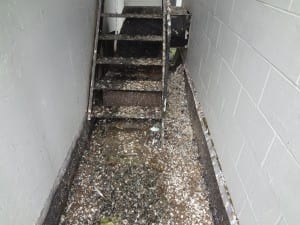
by Pigeon Patrol | Nov 3, 2015 | Animal Deterrent Products, Bird Deterrent Products, Bird Netting, Pigeon Patrol's Services, Pigeons in the News, UltraSonic Bird Control
 SAN FRANCISCO (CBS SF) — The owners of a San Francisco tofu company agreed in a consent decree filed in federal court Tuesday to cease operations until the U.S. Food and Drug Administration determines the company is selling clean and sanitary food.
SAN FRANCISCO (CBS SF) — The owners of a San Francisco tofu company agreed in a consent decree filed in federal court Tuesday to cease operations until the U.S. Food and Drug Administration determines the company is selling clean and sanitary food.
The consent decree concerning the Fong Kee Tofu Co. Inc. was filed in the court of U.S. Magistrate Kandis Westmore in Oakland.
The settlement stems from a civil lawsuit filed against the company and owners Yan Hui Fong, Jen Ying Fong and Suny Fong on Jan. 23 by the U.S. Justice Department at the request of the FDA. The lawsuit alleged that unsanitary conditions at the company were causing its products to become adulterated.
It alleged that FDA inspectors last year observed pigeons on top of plastic-wrapped raw soybean pallets, insects flying around the area used to process firm tofu, lack of proper handwashing by employees, and residue on equipment that was supposed to have been cleaned.
Kasie Lee, a lawyer for the company and its owners, could not immediately be reached for comment.
Acting Assistant U.S. Attorney General Joyce Branda said in a statement, “Fong Kee Tofu was repeatedly informed that the sanitation practices at its facility were deficient.”
“The failure to make sure that its facility was operating under sanitary conditions could be a serious risk to the public health and needed to be remedied,” Branda said.
The company’s products include firm tofu, soft tofu, fried tofu balls, soybean cake and soy drinks made from soybeans from Missouri, according to the lawsuit.
The company and owners agreed in the consent decree to be bound by a permanent injunction that requires them to stop preparing, manufacturing, packaging and selling the products.
If they wish to resume operations, they must hire an outside sanitation expert, labeling expert and auditor to develop and monitor a program for preparing uncontaminated and correctly labeled food. The experts can be three separate people or the same person.
The company cannot resume its business until it receives written authorization from the FDA. It would then be subject to FDA inspections without prior notice, under the injunction.
About Pigeon Patrol:
Pigeon Patrol Products & Services is the leading manufacturer and distributor of bird deterrent (control) products in Canada. Pigeon Patrol products have solved pest bird problems in industrial, commercial, and residential settings since 2000, by using safe and humane bird deterrents with only bird and animal friendly solutions. At Pigeon Patrol, we manufacture and offer a variety of bird deterrents, ranging from Ultra-flex Bird Spikes with UV protection, Bird Netting, 4-S Gel and the best Ultrasonic and audible sound devices on the market today.
Voted Best Canadian wholesaler for Bird Deterrent products four years in a row.
Contact Info: 1- 877– 4– NO-BIRD (www.pigeonpatrol.ca)
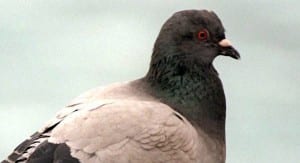
by Pigeon Patrol | Oct 31, 2015 | Bird Deterrent Products, Bird Netting, Pigeon Patrol's Services, Pigeon Spikes, UltraSonic Bird Control
 California’s only native pigeon species is taking a big hit from an infectious disease thought to be spread by other pigeons, and the state’s wildlife agency has suggested that bird lovers consider putting away their bird feeders and emptying birdbaths to help slow the spread of the disease.
California’s only native pigeon species is taking a big hit from an infectious disease thought to be spread by other pigeons, and the state’s wildlife agency has suggested that bird lovers consider putting away their bird feeders and emptying birdbaths to help slow the spread of the disease.
Band-tailed pigeons, a close relative of the extinct passenger pigeon, have been falling prey to the disease trichomoniasis for 70 years, but the disease has been taking a larger toll in the last decade, with a rise in deaths in the last two months. The pathogens are thought to be spread to band-tailed pigeons by rock doves, the common introduced pigeon of urban areas, which don’t seem to fall ill when infected.
And as a result, the California Department of Fish and Wildlife is suggesting that Californians in areas with band-tailed pigeon populations remove their bird feeders and empty and clean bird baths, to avoid attracting mixed flocks of rock doves and band-tails.
The band-tailed pigeon, Patagioenas fasciata, lives in groups that tend to inhabit open oak woodlands where they feed on acorns and other fallen tree nuts, a lifestyle not unlike that of the band-tailed’s close cousin the extinct passenger pigeon.
That preference for open forests with oaks means that the birds tend to live in the state’s coastal mountains and the Sierra foothills. If you’re wondering whether the pigeons massing around your feeder are band-taileds or the more prevalent introduced rock doves, look at their beaks and feet: on band-tailed pigeons, those extremities will be yellow. Band-taileds also tend to be larger than rock doves, with a white crescent on the back of their necks, and lacking the wing bars that most rock doves sport.
Also unlike rock doves, band-tailed pigeons reproduce slowly, with each pair producing one chick a year. That, and the birds’ gregarious habit, make them especially susceptible to population declines from diseases such as trichmoniasis. Spread by at least two related protozoa in the Trichomonas genus, the disease causes lesions in the birds’ mouths that interfere with eating and, eventually, breathing. As it takes some time to kill its victims, the disease allows them to transmit pathogens to other birds in the flock rather readily.
Though it’s been known in the California band-tailed population since the World War II era, mass dieoff events from trichomoniasis are on the rise, with six large mortalities in the last decade — including one in Monterey County in 2007 in which an estimated 43,000 birds perished. Mortalities tend to happen during winter, so CDFW’s suggestion of putting your feeder away won’t have to last forever.
The agency is asking members of the public to report dead band-tailed pigeons via the CDFW website or by phone at (916) 358-2790.
If you find a sick pigeon, you can ask one of the state’s wildlife rehabilitation centers for advice.
About Pigeon Patrol:
Pigeon Patrol Products & Services is the leading manufacturer and distributor of bird deterrent (control) products in Canada. Pigeon Patrol products have solved pest bird problems in industrial, commercial, and residential settings since 2000, by using safe and humane bird deterrents with only bird and animal friendly solutions. At Pigeon Patrol, we manufacture and offer a variety of bird deterrents, ranging from Ultra-flex Bird Spikes with UV protection, Bird Netting, 4-S Gel and the best Ultrasonic and audible sound devices on the market today.
Voted Best Canadian wholesaler for Bird Deterrent products four years in a row.
Contact Info: 1- 877– 4– NO-BIRD (www.pigeonpatrol.ca)
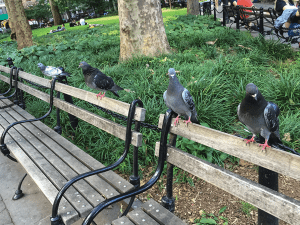
by Pigeon Patrol | Oct 29, 2015 | 4-S Gel Bird repellent, Animal Deterrent Products, Bird Netting, Pigeon Patrol's Services, Pigeon Spikes
 Spring feels in full swing. While that may not be good in some ways, plants and animals are ramping up their libidos. All manner of species display virility as spring progresses, but a common species often overlooked, is strutting about right at our feet. Call them pigeons, Rock Pigeons, Rock Doves, or rats with wings, they’re far from boring and they share our most urban Capitol Hill blocks happily.
Spring feels in full swing. While that may not be good in some ways, plants and animals are ramping up their libidos. All manner of species display virility as spring progresses, but a common species often overlooked, is strutting about right at our feet. Call them pigeons, Rock Pigeons, Rock Doves, or rats with wings, they’re far from boring and they share our most urban Capitol Hill blocks happily.
The pigeons we see on an almost daily basis, as common as House Sparrows, American Crows, European Starlings, and Glaucous-winged Gulls in the quintet of urban birds, are all ancestors of the Rock Pigeon or Rock Dove, Columbia livia. No matter their coloration, all these birds are feral descendants of birds brought to the Americas as pets and food as early as the 1600s, while successive escapes bolstered their population and variety. Their original wild population, spans from Europe through North Africa, and into Asia. With an appreciation for ledges and cliffs, they’ve adapted wholly to our built environment. Pigeons happily crowd ledges, roof tops, and attics, calling many a ledge on buildings of Broadway, Pike and Pine, First Hill, and downtown home.
From Mike Tyson to Charles Darwin, people have seen beauty in these aerial acrobats and gentle vocalists. Pigeons in their many varied forms, appear in Darwin’s On the Origin of Species and were central in helping him develop his theory. As with dogs, selective breeding has sussed out umpteen mutations of color and shape. Natural variation existed in the wild populations of course, but feral populations have muddied human breeding with sheer numbers, and we find ourselves looking at birds looking more and more like their ancestors. Besides, being bright white in a flock of gray, having decorative feathers that block vision, or having an odd tendency to tumble in the air aren’t terribly adaptive traits.
Take a second to watch your average city pigeon. In the vast majority, you find attractive shades of bluish gray, two black bands on the wings, and purplish green sheen on the neck and throat. These are the general colors of the nominate race of wild Rock Pigeons. Male birds are ever so slightly larger and have more extensive sheen. To most, the sexes look alike, but male birds stand out this time of year in behavior.
Pigeons can breed much of the year in mild climates, but as daylight lengthens hormones surge. Almost everyone has seen the comical courtship display of a puffed up male pigeon. Like many animals, humans included, they lose grip on reality, puff up their chests, and pursue their hopeful mate endlessly (while all she wants to do is eat bread crumbs). This can go on right at your feet while you wait for the bus, or on a precarious ledge where the pursued female may well be pushed off by her overzealous courtier. The desired result of this strutting, is copulation, an awkward balancing act for a brief cloacal kiss. Yet, unlike some birds, the pair is relatively monogamous. The male chooses a worthy nest site and stays with his mate throughout young rearing (he also coos incessantly to attract a mate to his site, imagine living next to the recording below on loop right outside your window).
Pigeons get a bad rap. They seem dirty, but if anything that’s because of city living, not poor hygiene. Yes, unlike some birds, they don’t take their young’s feces away from the nest, adding a veneer to roosting sites. This has worked for pigeon kind longer than humans have been raising them, so who are we to judge? Yes, contact with their droppings has proven a zoonotic vector. But shouldn’t common sense clearly guide us away from most anything’s poop anyway? These problems are easily avoided by restricting where Rock Pigeons roost, which most cities have figured out just fine.
Pigeons can also capture the imagination. Their spectacular flying abilities, allowing escape from swift predators like Peregrine Falcons, are a beauty to behold circling across city blocks. Pigeons have been heroes, saving lives by carrying messages across enemy lines during World War II with innate homing abilities. Organizations, books, and much research are devoted to pigeons. And while they may not be the smartest birds on the block, they’re successful while not edging out our native species. I simply enjoy them because their antics add a humorous note to a less noteworthy day about the Hill.
About Pigeon Patrol:
Pigeon Patrol Products & Services is the leading manufacturer and distributor of bird deterrent (control) products in Canada. Pigeon Patrol products have solved pest bird problems in industrial, commercial, and residential settings since 2000, by using safe and humane bird deterrents with only bird and animal friendly solutions. At Pigeon Patrol, we manufacture and offer a variety of bird deterrents, ranging from Ultra-flex Bird Spikes with UV protection, Bird Netting, 4-S Gel and the best Ultrasonic and audible sound devices on the market today.
Voted Best Canadian wholesaler for Bird Deterrent products four years in a row.
Contact Info: 1- 877– 4– NO-BIRD (www.pigeonpatrol.ca)
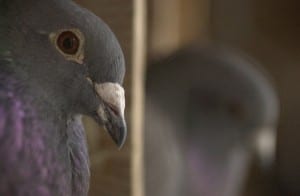
by Pigeon Patrol | Oct 26, 2015 | Bird Deterrent Products, Bird Netting, Pigeon Patrol's Services, Pigeon Spikes, UltraSonic Bird Control
 “We’ve had a few calls, we see it more and more every day. They will breed every 45 days, so it gets worse and w…”
“We’ve had a few calls, we see it more and more every day. They will breed every 45 days, so it gets worse and w…”
–Richard Swallow
There is a growing pigeon problem in Saskatchewan, and Yorkton is no exception, with birds increasingly becoming a concern for local businesses and residents. The Yorkton Business Improvement District recently held an information meeting to discuss what options are available for controlling the pest bird.
Richard Swallow, owner of Riva Specialized Cleaning Services and Pigeon Control, was invited to speak on the services they offer to get pigeons out of a region. The business is focused on humane elimination of birds, using different devices to make a structure unappealing to birds. Riva is one of the few places in Saskatchewan who offers the service.
“It’s really understanding what the birds are doing and where they are in order to get away from that site. We implement the proper solutions.”
The birds are an invasive species, and Swallow says that the reasons to get rid of them are numerous, whether it’s safety issues caused by their waste, their destruction of property, or the respiratory diseases they can spread in an area, especially as they tend to enjoy being near HVAC units.
In Yorkton, one of the biggest problem areas is an abandoned building, where it is estimated at least 200 birds have taken up residence. Swallow says a building like this presents a challenge on two fronts.
One, the building itself from a safety perspective, given the dangers that are inherent in an old structure, as well as the difficulty of moving pigeons out of a place where they have settled and have been occupying for a long time.
“You have dedicated birds, you have generational birds that have been in the same area for years. Very different strategy to implement than when you’ve just got a sign with birds that are sitting and crapping on it every day. It’s different approach, different strategies and different implementation of the right tools to get a situation we can guarantee.”
Part of getting rid of dedicated birds involves trapping, though Swallow says if you want a live release the birds will have to be driven to Calgary at a minimum to prevent their return. He says that they also have a humane method of euthanizing the birds. While there are methods of sterilizing the birds available in other markets, those are not currently available in Canada, something Swallow hopes to see change soon.
Bruce Thurston, chair of YBID, emphasizes that at this point there is no funding proposed to do an expansive bird control project, the meeting intended to be a fact finding mission to see what can be done about birds.
“We’ve had a few calls, we see it more and more every day. They will breed every 45 days, so it gets worse and worse every year, so sooner or later something has to be done, whether on an individual basis or as a collective community.”
About Pigeon Patrol:
Pigeon Patrol Products & Services is the leading manufacturer and distributor of bird deterrent (control) products in Canada. Pigeon Patrol products have solved pest bird problems in industrial, commercial, and residential settings since 2000, by using safe and humane bird deterrents with only bird and animal friendly solutions. At Pigeon Patrol, we manufacture and offer a variety of bird deterrents, ranging from Ultra-flex Bird Spikes with UV protection, Bird Netting, 4-S Gel and the best Ultrasonic and audible sound devices on the market today.
Voted Best Canadian wholesaler for Bird Deterrent products four years in a row.
Contact Info: 1- 877– 4– NO-BIRD (www.pigeonpatrol.ca)

 IN “THE silence of the birds” (Jan 4), wildlife scientist Umesh Srinivasan said that logged forests being converted into oil palm plantations have next to zero value for tropical biodiversity.
IN “THE silence of the birds” (Jan 4), wildlife scientist Umesh Srinivasan said that logged forests being converted into oil palm plantations have next to zero value for tropical biodiversity.